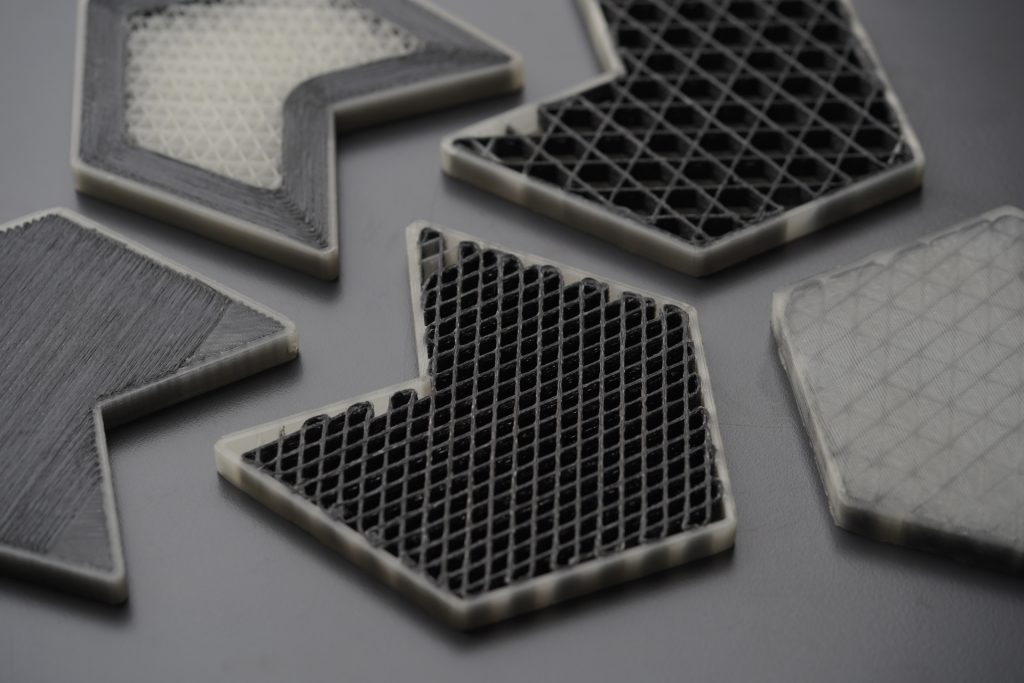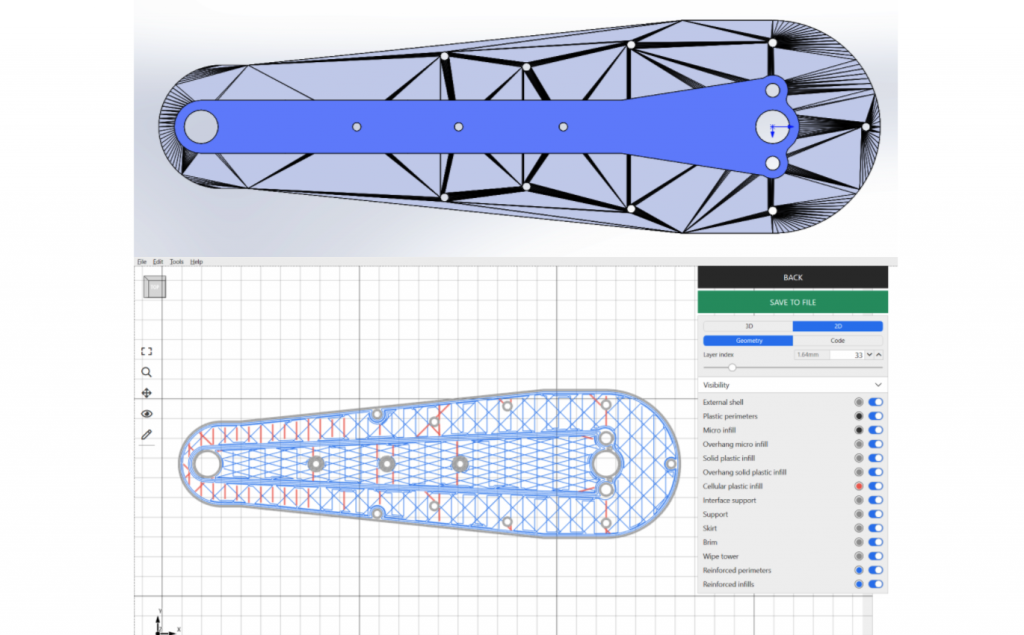Anisoprint, a manufacturer of continuous fiber 3D printing systems, has launched an update for its proprietary slicing software.
The new and improved Aura 2.1 Premium is the driving force behind the company’s flagship Composer 3D printer, and enables users to customize and integrate fiber reinforcements into polymer-based composite components.
Packed full of verified printing profiles for a wide variety of polymer filaments, the software is designed to eliminate the otherwise costly and arduous trial-and-error approach to composite 3D printing.

What’s new in Aura 2.1?
The latest update introduces what Anisoprint calls ‘masks,’ special models that can be added to a part’s 3D file in the slicer’s virtual workspace. The ultimate aim here is to provide users with greater control over the intricacies of their fiber reinforcements in an easy-to-visualize manner. By intersecting with the original STL file of a component, masks can dictate exactly when and where fiber reinforcements are co-extruded, enabling users to modify their builds’ mechanical properties and strength characteristics.
As well as highlighting reinforcement locations, masks can also be used to adjust the support positions of a part. After placing a mask, the user can either mark the masked area as a zone of enforced support or as a support blocker. The former ensures the generation of supports in the specified location, whereas the latter is used to eliminate the generation of supports in the mask, opening up new avenues for designers to save on unnecessary material use while optimizing the structural integrity of their parts.
“Masks are a powerful tool that allow users to create complex fiber layup schemes that match the actual loading conditions of the part,” explains Anisoprint CEO Fedor Antonov. “By using masks, our customers can select certain areas for enhanced reinforcing or leave them unreinforced to decrease print time and material usage. They allow selective usage of different infills, fiber/plastic patterns, supports and other slicing settings within one geometrical layer with ease. This is an absolutely unique feature that gives slicing for continuous fibers a new level of flexibility.”
Looking at the example below, we have a straightforward part with a hole in the middle. Masks can be used to improve functionality by increasing the stiffness of the component in the horizontal plane. The workflow here has been designed to be extremely intuitive and streamlined, as users are only required to place the two masks in the workspace before moving them into the component to form the intersections. At this point, the structures of the masked areas can be fine-tuned, and the Composer 3D printer will do the rest.

Function-centric component design
Anisoprint’s continuous fiber co-extrusion (CFC) 3D printing technology inherently lends itself to high-strength part production. Still, Aura’s new mask functionality can be used to further optimize these parts with the end-use application in mind. By adjusting a part’s reinforcement schemes on a layer-by-layer basis, users can customize their builds according to the load they are expected to bear.
For a more precise application of the mask, Anisoprint recommends leveraging a third-party topology optimization program. By first determining the exact areas that will be subjected to the most load, users can export the highlighted ‘load zone’ and use it as a custom mask geometry. In this way, human error is eliminated altogether, and the reinforcements are co-extruded in only the relevant sections, as determined by sophisticated finite element analysis algorithms.
According to the manufacturer, the use of topology optimization can lead to weight and cost savings of up to 15% and 25% respectively, all while increasing the strength and deformation stiffness of the 3D printed parts. In the example below, which highlights the load area in blue, deformation has been reduced by 15%, max grid stress by 20%, and max stress in the reinforced sections by 31%.

For users that aren’t looking to 3D print composite parts, Aura is also compatible with other conventional FFF systems, meaning it can be used as a run-of-the-mill desktop slicer. The latest version of Aura can be downloaded here.
Subscribe to the 3D Printing Industry newsletter for the latest news in additive manufacturing. You can also stay connected by following us on Twitter and liking us on Facebook.
Looking for a career in additive manufacturing? Visit 3D Printing Jobs for a selection of roles in the industry.
Featured image shows continuous fiber-reinforced composite parts 3D printed by Anisoprint. Photo via Anisoprint.



